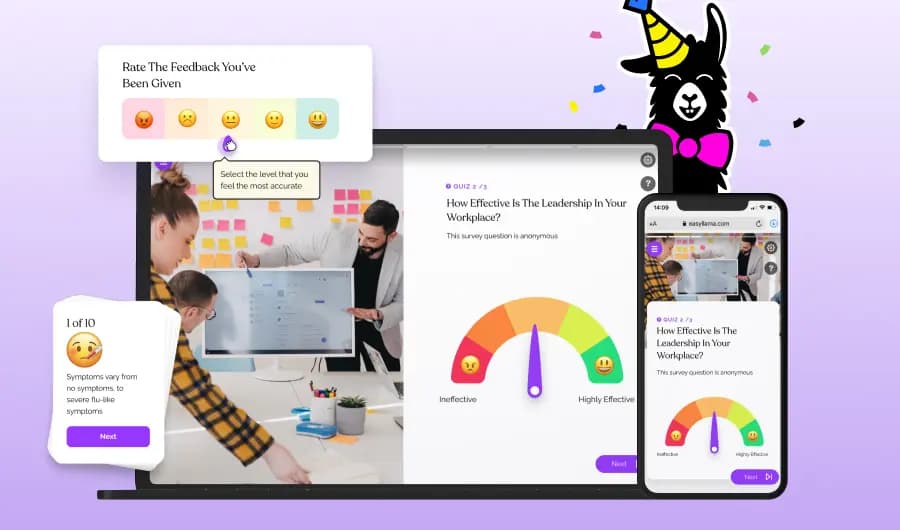
Product
The Project Management Triangle: A Tool for Optimizing Team Performance
The project management triangle highlights the challenge of balancing scope, cost, and time to deliver a quality project. It's all about the struggle project managers face in keeping a project on track despite limited time, tight budgets, and broad project goals.
Changing one part of the triangle means you have to adjust the others, showing how important it is for project managers to manage these elements well to keep the project within budget, on time, and in line with what was planned.
We'll look closer at each point of the triangle—scope, cost, and time—how they relate to each other and how project managers can balance them to help their projects succeed.
Understanding the Project Management Triangle
The Project Management Triangle is a guide that shows how three important parts — scope, cost, and time — affect the quality of a project. It tells us that these parts are connected: if you change one, you must adjust the others to keep the project on track. Not balancing them well can lower the quality of the project, adding risk to the final deliverable.

Project managers must skillfully manage these three areas to ensure the project stays within budget, finishes on time, and meets the planned goals, which helps ensure the project turns out as well as possible.
Interplay of Scope, Cost, and Time in Project Management
In the Project Management Triangle, scope, cost, and time are closely linked, affecting how a project is managed.
First, the scope — nor what the project aims to achieve — directly affects both time and cost. If the scope gets bigger, the project will likely take more time and require a larger budget to cover everything needed.

Second, time and cost have a give-and-take relationship. If you cut costs, you might need to extend the deadline to work within a tighter budget. On the other hand, if you're short on time and need to speed things up, you'll have to spend more money.
These connections show why the Project Management Triangle is sometimes called the "iron triangle." Its rules are firm, and changing one part of the triangle will always affect the others. This challenges project managers to carefully balance these three elements to keep a project on track.
Navigating the Triple Constraints of the Triangle
Effective management of the project's triple constraints requires the project manager to comprehensively understand each element—scope, cost, and time—and identify areas where flexibility is feasible to adapt to changes during the project's lifecycle.

What is the Project Scope?
Project scope is about how big or complex a project is, covering everything from the quality and details of what the project will deliver to how much work it involves. Increasing the project's scope means you'll need more time and money to finish it.
The main parts of the project scope are:
- How complicated the project is.
- How much of the final product will there be?
- The quality level you're aiming for.
- The project's capacity, like how many users an app can support simultaneously.
- How detailed it is.
- How many features are there, and how complex are they?
To avoid "scope creep" — when the project starts to grow beyond what was originally planned — it's important to set clear project goals and get everyone involved to agree on them before starting work.
Cost Overview
In project management, "cost" includes more than just money. It refers to all the resources needed to complete a project. This means everything from the tools and equipment to the team and support systems.
Important aspects of cost are:
- The budget for the project.
- The number of people on the team.
- The equipment and facilities used.
- Potential opportunities to consider.
Although we often think about cost in terms of money, it's about all the resources that have a financial impact. For example, hiring more staff means spending more on salaries, and keeping offices open longer leads to higher electricity bills.
Managing Time in Projects
In managing a project's time, it's important to focus not just on how much time you have but also how you use it. You might need to change deadlines, update how the team's schedule is managed, cut down on the time planned for initial stages, and more.
Key points about time in projects include:
- The full schedule from start to finish.
- How many hours are spent working on the project?
- Keeping track of important dates and goals.
- Setting aside enough time for planning and coming up with strategies.
- How many different stages does the project go through?
When facing a tighter budget or a bigger project scope, finding effective ways to adjust time management is crucial. This could mean pushing back deadlines, adding more work hours, or other steps to keep the project moving smoothly.
Innovation's Impact on Project Management
Innovation is key in making projects more efficient or faster, sometimes without affecting other project areas like cost, scope, or time.
Imagine if someone on your team figures out how to make a tool you're using even better. This improvement could mean you get things done quicker or you need fewer people to work on the project.
Also, making your work processes smoother and quicker, like speeding up how decisions are made, helps everyone work better without losing quality. Using tools that help organize your work, like project management software or templates for regular tasks, can save time and money without compromising the project's goals or quality.
Tips for Using the Project Management Triangle
Now that you know what the project management triangle is, let's talk about how to use it in your daily work. For further insights, refer to our upcoming article Five Phases of Managing a Project to Enhance Efficiency to see where they might connect of overlap with this triangle.
Prioritizing in Project Management
The key idea of the project management triangle is that you can't keep scope, cost, and time all locked in place; you need to be able to adjust at least one to handle surprises. Hey
If keeping costs down is most important, you might need to extend your timeline if unexpected issues come up, instead of bringing in more people to fix it fast. If meeting a deadline is non-negotiable, it's smart to have a backup plan with extra funding ready, so you can deal with any problems without falling behind.
Setting Expectations Upfront
It's important to lay out the limits and main goals of your project clearly to everyone involved, including your client and stakeholders. This helps prevent any misunderstandings and ensures everyone is satisfied at the end.
In sectors like construction and engineering, where unexpected issues are common, contracts usually have special sections to ensure everyone understands what to expect. These sections can include:
- Budgets are set aside for unexpected costs, which the client agrees to in advance.
- A list of things that could potentially delay the project, like bad weather, natural disasters, or big local events.
- Plans for how to handle each type of delay, including how much extra time and money it might add.
This way, you give everyone a heads-up about what could go wrong and how it would affect the project's budget and timeline. You also note what the client prefers in these situations, so you can refer back to it if you need to make changes. This approach keeps everyone on the same page and avoids confusion about why certain decisions were made once the project is done.
Keep Everyone Informed
Once you have a plan that covers what to do if there are changes in budget, schedule, or what the project needs, make sure to update everyone involved regularly.
If you're warned about running low on something important for the project, let your client and project leader know right away. This heads-up means if you do run out, they won't be surprised, and you'll be ready to adjust plans as needed. If it turns out you don't run out, both you and your client will feel better knowing you were prepared for any situation.
Adapting the Project Management Triangle to Your Style
Different project management methods put different things first, like saving money or saving time, leading to different versions of the project management triangle. Below, we’ve grouped seven popular project management approaches into two categories: those that focus on keeping costs low and those that focus on saving time.

Budget-Friendly Project Management Approaches
Projects with limited budgets but flexible deadlines can benefit from these project management strategies, which focus on using resources wisely:
- Waterfall: This method follows a step-by-step process where each phase must be completed before the next one begins. It requires project schedules to be adaptable, as any delays will affect the whole timeline.
- Lean: Aims to use the least possible costs and resources. This approach supports extending project times or reducing the project's scope to stay within budget.
- Project Management Body of Knowledge (PMBOK® Waterfall): An adaptation of the traditional waterfall method that uses the Project Management Institute's PMBOK guidelines to make the process more efficient.
Quick Project Management Methods
When saving time is key, these project management styles help speed up the work and avoid delays, ensuring teams can keep moving fast.
- Agile: This method is all about being able to change quickly without adding too much time or cost. Teams often use special software to stay agile and adaptable.
- Scrum: Often seen in software projects, Scrum breaks work down into short cycles (sprints) and includes daily team meetings to cut down on delays.
- Kanban: Aims to keep work flowing continuously and visibly, often with the help of Kanban boards, so there's less waiting around.
- Scrumban: Mixes Kanban's ongoing flow with Scrum's daily updates to help teams work even more efficiently.
Each approach tries to find the best mix of keeping costs low, working fast, and maintaining quality. But, because you have to choose what to focus on in the project management triangle, these methods lean towards saving time.
Making the Most of the Triple Constraints
At first glance, the iron triangle and its triple constraints might seem like a set of tough rules. However, once you get the hang of using them in your project management, you'll see they can actually make things run smoother. Knowing what you can and can't change early on helps avoid costly problems later.
Also, by understanding how these constraints work, you can pick the best software for managing your projects, set up your processes right, and organize your team's work so everyone can start strong. With this foundation, your team has everything it needs to achieve great results.
About Scalio
Scalio is a global digital product agency driving digital success in over 30 industries. Through expert engineering, strategy, and design, we build and scale platforms and digital experiences for global brands.
Learn more about our expertise in your industry.
_
If you have more questions or interest in meeting Scalio Leadership Team, feel free to reach out for a friendly follow-up!

Lawrence Valenti
CCO | Managing Partner
Email: lawrence@scal.io
LinkedIn

Joshua Lucas
COO | Managing Partner
Email: jlucas@scal.io
LinkedIn

Micah Lucas
CTO | Managing Partner
Email: micah@scal.io
LinkedIn

Bradley Greenwood
CEO | Managing Partner
Email: bradley@scal.io
LinkedIn





